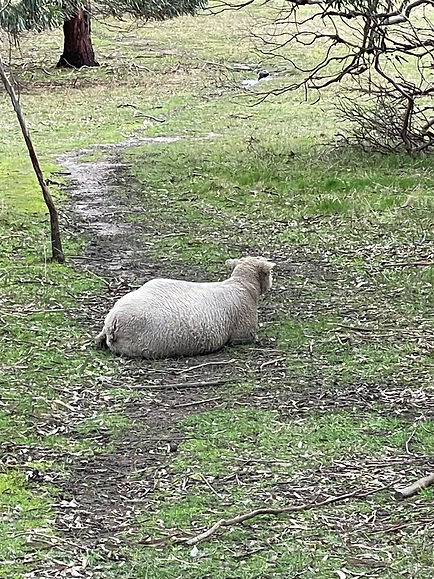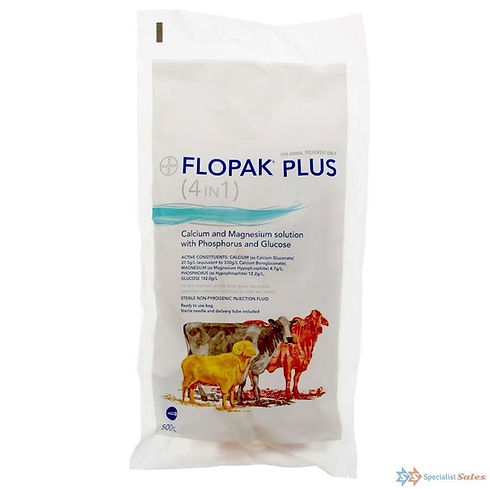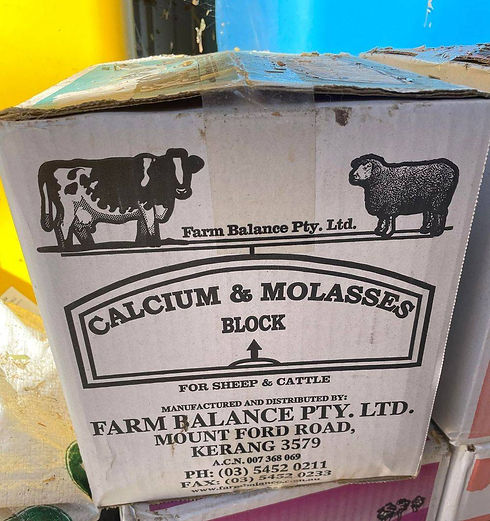

Pregnancy Toxaemia and Hypocalcaemia (Milk Fever) in Ewes
Pregnancy Toxaemia
Pregnancy toxaemia and hypocalcaemia are two of the major issues that affect breeding ewes in late pregnancy and early lactation. They have similar symptoms but need to be treated differently so it helps to be able to differentiate between them. Both can be fatal, yet both can be treated and in many cases prevented with a little knowledge, preparation and diligence.
PREGNANCY TOXAEMIA
Pregnancy toxaemia is often known as twin lambing disease, as it often affects ewes with multiple foetuses. It occurs when drastically low levels of glucose in the blood cause damage to the brain and result in dehydration, kidney failure and ultimately death, if not treated quickly. Close to lambing, rapidly growing foetuses and udders require a significant amount of glucose, and if the ewe cannot source this from her diet, she has to use her own reserves, depleting her fat energy which produces ketones in her body. The more fat used, the more ketones produced. Ketones are used as an energy source by muscles in times of severe nutrient deficiency. Over a prolonged period the ketones become toxic and clinical signs of toxaemia appear. Pregnancy toxaemia can be caused by several factors:
-
Lack of feed
-
New green pasture that is high in water but low in dry matter and nutrients
-
Ewes with multiple lambs that are taking up a lot of space allowing for less feed to be consumed
-
Ewes that stop eating due to extreme weather situations
-
Ewes that lie down more due to sore feet or weight stress
-
Over fat ewes
-
Stress and fasting
SIGNS OF PREGNANCY TOXAEMIA
The signs of possible Pregnancy Toxaemia include:
-
Ewe being separated from the flock
-
Ewe constantly lying down, drowsy or at worst, comatose
-
Ewe not eating
-
Ewe walking around with her head held high or standing with head held near the ground
-
Nervous system issues: tremors, blindness
-
Late stage can include lay down and won’t get up, mouth and nasal discharge, dark vaginal discharge
-
Death within three to four days


TREATMENT OF PREGNANCY TOXAEMIA


Early diagnosis and treatment are essential for the wellbeing of both the ewe and lamb(s) and to prevent the toxaemia from progressing. Depending on the stage of pregnancy and the level of toxaemia, a Vet may consider inducing the lamb or performing a caesarean section.
If you are able to pick the pregnancy toxaemia up early, a glucose drench or drench of Ketol every 6-12 hours should provide an adequate increase in the ewe’s blood sugar levels. Offer good quality feed, preferably high in protein, such as grain mix and Lucerne hay.
PREVENTION OF PREGNANCY TOXAEMIA
Obviously the best way to avoid pregnancy toxaemia is to prevent it happening in the first place. This may not always be possible, but there are steps you can take to help.
-
Watch your ewes closely, especially during the last few weeks of lambing and the first few weeks of lactation. Be extra vigilant if the weather is unfavourable and the ewes are shelter bound. Act quickly if you suspect preg. tox.
-
Allocate your best paddocks to your pregnant ewes, especially those scanned for multiples or who you think may be carrying multiples.
-
Monitor their weight throughout their pregnancy as the last few weeks is too late to panic and put them on a diet. Try and keep them between a Body Score of 3 and 4.
-
Lessen the amount of stress, as in moving the ewes, shearing them or yarding them unnecessarily.
-
Try to make sure their worm burden is low as this too, causes stress.
-
Offer Molasses water to the pregnant ewes in the last few weeks of pregnancy and the first few weeks of lactation, as this will help to keep their glucose levels up.
-
Ensure they have free choice minerals in either powder or block form, preferably minerals specifically for lambing ewes - “Ewe and Lamb block”, “Lambli” block, and “Progenix Leadup” loose lick, if you choose to use the GrazeMax range, which contains extra carbohydrates.
-
Ensure you have Ketol on hand, just in case you need it. It should be available from your Farm Supply store.

Hypocalcaemia
Hypocalcaemia, also known as Milk Fever, is a deficiency of calcium in the bloodstream, causing muscles to not contract properly, including the heart, gut and leg muscles. It is often mistaken for hypoglycaemia and also affects ewes in their last trimester of pregnancy and first month of lactation. This is because they are sometimes unable to mobilise the calcium from their bones quickly enough for the needs of the growing lamb. Unlike hypoglycaemia, hypocalcaemia is not confined to pregnant ewes. Any sheep that is stressed is susceptible to it, including sheep that are yarded, trucked, stop eating during bad weather or are just not absorbing enough calcium from their diets. Much of our soil now is low in calcium, so this could become more of an issue, if not addressed by the breeders. Grazing cereal regrowth, which is low in calcium, can be an issue as can any weeds/pasture containing oxalates, which combine with calcium in the bloodstream and effectively remove it. These include Goosefoot, Mintweed, Fat Hen, Soursob (Oxalis), the Docks and Doublegee, as well as some of the salt tolerant succulent weeds.
THE SYMPTOMS OF HYPOCALCAEMIA
Include:
Rapid onset
Stiff, uncoordinated gait
Muscle tremors
Weakness
Sitting down on the brisket and being unable to rise
Sudden death within 24 hours
TREATMENT
A range of injectables containing calcium borogluconate will rapidly restore calcium levels, often within thirty minutes, but ensure you follow the instructions. These can include a (4in1) FloPack Plus or straight calcium injections. Injections can be repeated every 4-6 hours for those animals that have not made a full recovery. Your Vet can also take blood to determine calcium levels. Due to the rapid onset of possible death, it is better to not wait for the blood test results before administering the calcium supplement.
PREVENTION
As always, prevention is better than cure, so good nutrition and careful management are the keys. Make sure you have adequate calcium supplements for your sheep, especially your breeding ewes and growing lambs. Again, “Lambli” and “Ewe and Lamb” blocks are good as are the "Calcium and Molasses" blocks, by Olssons. As the uptake of Calcium is affected by Magnesium, ensure your Calcium block also contains Magnesium. Dickson Ag. also have a Calcium/Magnesium Salt block. Animal Innovations also have some excellent loose lick minerals in the GrazeMax and ProgenX Leadup ranges. Finely crushed Limestone can also be added to their grain or given as a loose lick.


